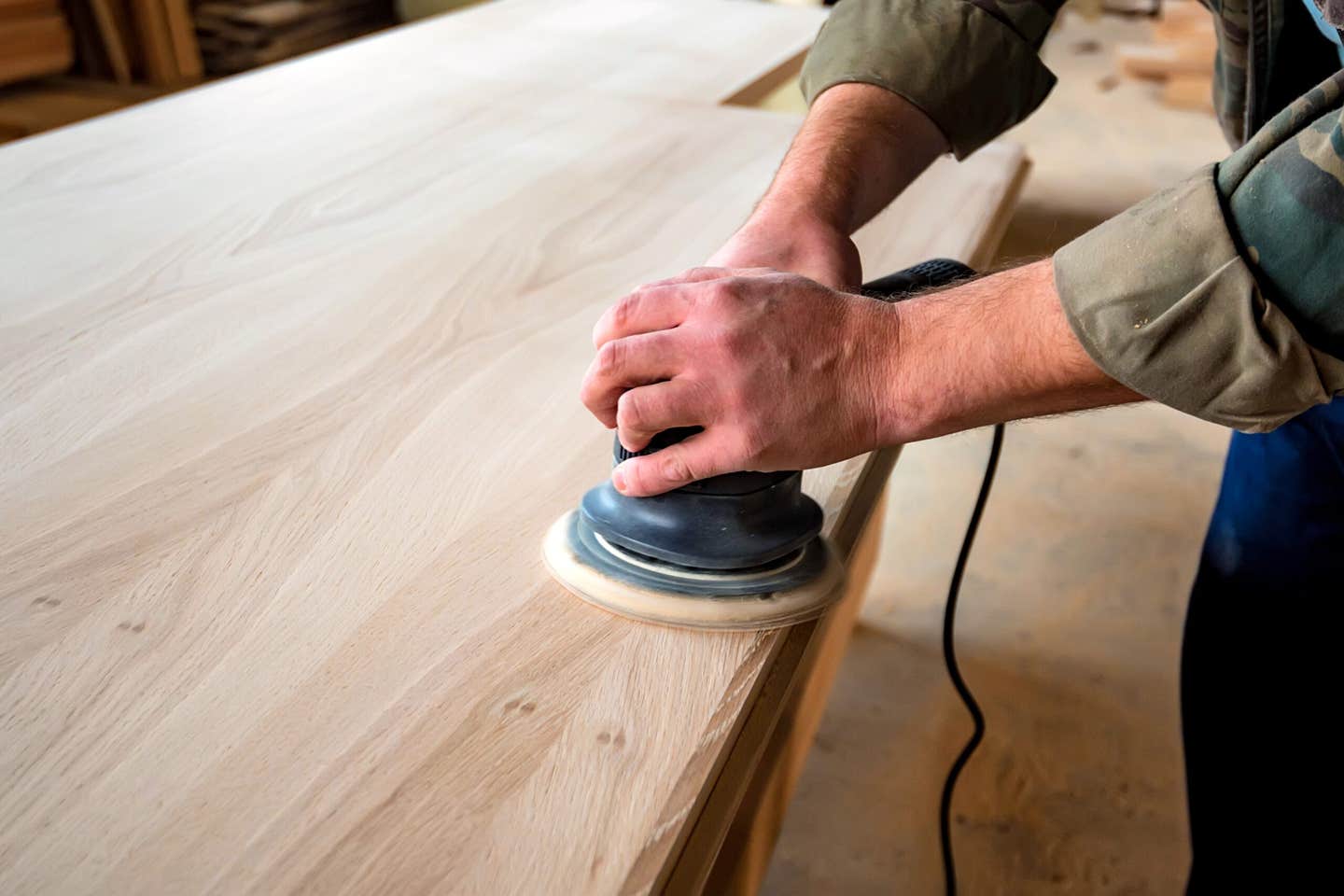Out on your own
Outsourcing is usually touted as a way for smaller shops to increase their productivity without making huge investments in machines and people. That last component, employees, is quickly becoming more…
Outsourcing is usually touted as a way for smaller shops to increase their productivity without making huge investments in machines and people. That last component, employees, is quickly becoming more pivotal in the decision. It’s getting hard to hire cabinetmakers. And that’s one of several factors that often make outsourcing more of a necessity than a choice.
First off, it’s getting more difficult to even find people with an interest in cabinetmaking as a career. School districts across the country have dropped hands-on shop and vocational courses en masse as budgets have contracted. Woodshops are going the way of art and music courses as the public education system endures a very real financial crisis. Not just individual districts, but whole states are suffering. For example, this spring Michigan’s teachers were informed they might not get their final paychecks for the school year and South Dakota had to pass a half-cent sales tax just to try to keep teachers from moving out of state. Without basic woodshop experience, high school students have no introduction to — and thus no reason to consider — the possibility of a career in this field. Cabinetmaking has evolved into a hybrid trade, where CNC skills are becoming not only desirable, but also essential. And very few school districts can afford to invest in a table saw now — let alone a CNC router — and the instructor to train students on it.
Health insurance costs are another reason that it’s becoming hard to hire and more appealing to outsource. Insurance is causing a lot of small shops to reconsider their employment practices. Not only have the requirements for coverage stiffened, the costs of policies have dramatically skyrocketed in the last few years — at the same time that deductibles have climbed to an unconscionable level. Job seekers are often as concerned now about health coverage as they are wages and even shops that are not legally required to provide a policy find they simply can’t hire good people without offering one.
In an ironic twist, the availability of outsourced parts actually means that potential workers with innate skills and some management ability are now in a far better position to open their own shops, rather than seek a position with an existing business. They can get production up and running with just a few basic machines and outsource the boxes, drawers, doors and countertops.
For one- or two-man shops, hiring competent seasonal work is virtually a thing of the past. It’s hard to hire good people if you can’t guarantee them work year-round, so it’s a lot easier to send the work out.
Increased levels of substance abuse have also become a real factor in hiring. According to the National Institutes of Health, abuse now costs the country more than $700 billion annually in terms of crime, lost work productivity and health care. Having an employee not show for work because of physical impacts (as in a hangover, sleeping in and so on), or because he/she needs to check in daily with the police or a parole officer or must attend mandatory rehabilitation classes during regular work hours all cause havoc with scheduling. The bottom line is that outsourcing is becoming increasingly attractive because hiring is becoming increasingly more difficult.
There is also a less quantifiable factor that is difficult to discuss while remaining politically correct. Many older shop managers feel that young people have a sense of entitlement now that no other generation ever had. They feel that the “kids” they hire have more regard for their own concerns than those of the job. One experienced manager recently reported that he watched an employee shut down a saw to answer a text and do it right in front of him, thinking there was nothing wrong with that. Perhaps what’s happening here, in part, is that young hires have grown up in a world of technology that no longer values manual skills. In another few decades, most casework will never touch a human hand during construction and these young people will perhaps be in their element.
Outsourcing is heaven-sent for shops with hiring challenges. Scheduling jobs can get a lot easier when you know the doors will definitely arrive on the 16th, even if you don’t know whether the new guy will.
Advantages of outsourcing
Woodshops have been outsourcing countertops for generations: they just didn’t call it that. And a lot of shops made some margin on that service, even though they did none of the work. There’s a lesson there: the two times a shop owner or manager comes in contact with customers — during sales and installations — also happen to be the two most profitable aspects of cabinetmaking for most shops. The actual manufacturing of product consumes a great deal of time and resources and also requires a large investment in both. So it’s no surprise that a lot of smaller shops are concentrating on those two areas (sales and installs) and sending the heavy lifting somewhere else.
For shops in transition, it can be a real challenge to decide which way to jump. Should one increase in-house productivity with a new CNC, or send more work out to a third-party manufacturer? If the decision is to go with outsourcing, the results are more immediate and that can play into a sense of gratification. The profits might not be as large, but they are happening now, rather than in a year or two.
There are also some very real cash-flow advantages to outsourcing. For example, assembling parts usually takes less skill than milling them, so the labor required is generally less expensive than having a CNC operator in-house. It also takes a lot less time to train somebody to pop an RTA (ready-to-assemble) cabinet together than it does to create a tool path, size a bit or gauge the best travel speed. Once somebody has assembled a few cabinet kits, there are relatively few surprises (pop tab A into slot B) and thereby fewer choices for them to make. The process becomes rote. The shop is now employing a lower skill factory worker, not a computer programmer.
One unanticipated aspect to outsourcing is that a small shop gets physically bigger — that is, there is more available floor space when the crew doesn’t have to handle, store, move or break down full sheets. That can lead to some efficiencies and better time management, especially for a business that is implementing a lean manufacturing philosophy.
With outsourcing, time spent fixing mistakes is no longer a big issue. The mistakes now happen somewhere else. Plus, CNC milling is generally more accurate and delivers a cleaner edge than a table saw cut. Both of those facets can help increase the rate of production and also the quality of the completed project.
And one of the major advantages to outsourcing is that, while the boxes, doors and drawers are being milled, the shop manager can be working on a bid or a drawing for the next job.
Outsourcing lite
Sometimes, the decision isn’t all or nothing. A woodshop might choose to hire a local CNC operator to make some of the case parts and then drive over there and pick them up, avoiding shipping costs. MDF is heavy and shipping can be a big issue in outsourcing. Some small CNC shops will even allow the cabinetmaker to drop-ship the raw materials to their dock, thus avoiding a markup. Being in control of purchasing the sheet stock also allows the woodshop to choose the quality and might even open the possibility of shopping for a better price than the CNC shop’s regular supplier might offer. Plus, many milling shops will also have an edgebander and/or boring capability, so they can deliver completed panels and that can save a lot of time and floor space at the cabinet shop.
Working with somebody in the neighborhood offers some potential for developing a strong relationship with this supplier and that can lead to getting mistakes fixed quickly or having rush orders put on a fast track. Working out details over a cup of coffee in a face-to-face meeting can be a lot more comfortable than dealing with a distant project manager using texts and tweets.
Of course, buying the cases from the same source as the drawers and doors has some obvious and strong advantages, even if the shipping does cost more. These are generally in the area of fit and finish. Having the same factory build all the components means they will be using the same batch of laminate, melamine, hardwood, stain and so on for all of the parts, so things will match better. Their drawer hardware will probably fit better, too, if they build both the cabinet and the drawer box.
There are some jobs where outsourcing some, or even all of the project simply won’t work. These are usually small tasks that are simply not worth the shipping, or very high-end jobs that require something more than a factory can provide, or millwork that is one-of-a-kind where custom curves or perhaps carving or engraving make it easier to do in-house.
And there are some jobs that woodworkers just need to do themselves so that they can still feel like real cabinetmakers. Time spent in the shop can be very therapeutic, plus a lot of woodworkers have difficulty telling the client that a store-bought package is custom cabinetry. Ethically, the woodshop has just saved the client some money and delivered an excellent product, but morally it can be somewhat diminishing to claim that work done in a remote factory on massive machines, by robots or CNC mills, is really yours.
And there’s the control issue. A lot of proficient and skilled craftsmen have a really hard time allowing somebody else to make some or all of the parts in a job. They feel the quality will decline if they are not directly involved. That can affect morale on the shop floor and leave your best workers feeling undervalued and unappreciated. This can be a very real issue, especially for teams who have been together for a long time and, if it crops up, it needs to be addressed. The most logical approach is to allot more responsibility for design and ordering to these capable people, so they feel more involved and more in charge. A road trip to the factory can make a big difference, too: putting faces on the machine operators that are replacing them can personalize the experience and make it more comfortable.
Mistakes happen
Outsourcing isn’t always sunshine. Sometimes there are parts damaged in transit or missing components, or elements that have been milled incorrectly because either the supplier or the cabinetmaker made a mistake. Often these bumps in the road are easily surmountable — the customer might have to wait a few days for the last couple of doors or drawers to be installed — but sometimes they are critical and can disrupt the entire job. The base cabinets might all be an inch too wide or maybe the appliances won’t fit. In those cases, the install can be delayed as will the final paycheck on the job.
On smaller tasks, it can sometimes take longer to design and submit drawings than it does to just go down to the shop and build the part.
It can also take a while to “train” your supplier to do things exactly the way they need to be done. Having a local CNC shop cut parts sounds simple enough, but there’s always a learning curve. It might be something as basic as managing grain patterns, so the door panel pairs look like matched pairs. It might even be as simple as showing them how to work your labeling system, so that the matched pair ends up in the same cabinet, and not on opposite ends of the kitchen.
If you’re having raw stock drop shipped to a cutting shop, make sure the finished dimensions match the sheet stock that the cutter usually purchases, or that the machine operator there is aware of the difference. A very small variance in thickness can play havoc with how an edge fits in a dado and, if the CNC operator is used to using certain bits/cutters to deliver precise fits, a slightly thicker or thinner melamine or veneer can cause a problem.
Software choices
For cabinet shops that are just embarking on the outsourcing adventure, it’s a really good idea to discuss design software with all of the potential parts suppliers before purchasing or leasing a CAD program. Software has come a long way and a woodshop can now use a single package to sell the job to the customer (using 3-D renderings) and then send a cut list to a CNC shop complete with labels, or even email the entire job to an outsourcing supplier. Be aware that file size can be an issue and this needs to be discussed, too. Sometimes a rendering can eat up a lot of memory and the email attachment can exceed the file size allowed by the Internet service provider. In that case, an ftp option could be more appropriate where the file is uploaded to a server or even a memory stick in the mail might be an option. The point here is that those decisions need to be part of the plan and not just a reaction to an unforeseen problem.
If the woodshop and the supplier are using the same software and everything is lined up properly, the shop can use components that the supplier routinely manufactures to create a design. A “custom” job can come together using nothing but stock door profiles, stains and finishes, moldings, fillers, drawer slides, even pulls and knobs. Some of the larger suppliers offer a huge array of choices in these areas, and most will match existing stains or species if necessary.
The completed kitchen can arrive in flat packs that are delivered directly to the jobsite for quick assembly, and the entire process is based on those original sales renderings. For the cabinet shop, the right software can reduce any project to those two most profitable areas of activity: sales and installation.
For outsourcing opportunities, please visit our online Resource Guide at www.woodshopnews.com.
This article originally appeared in the June 2016 issue.







